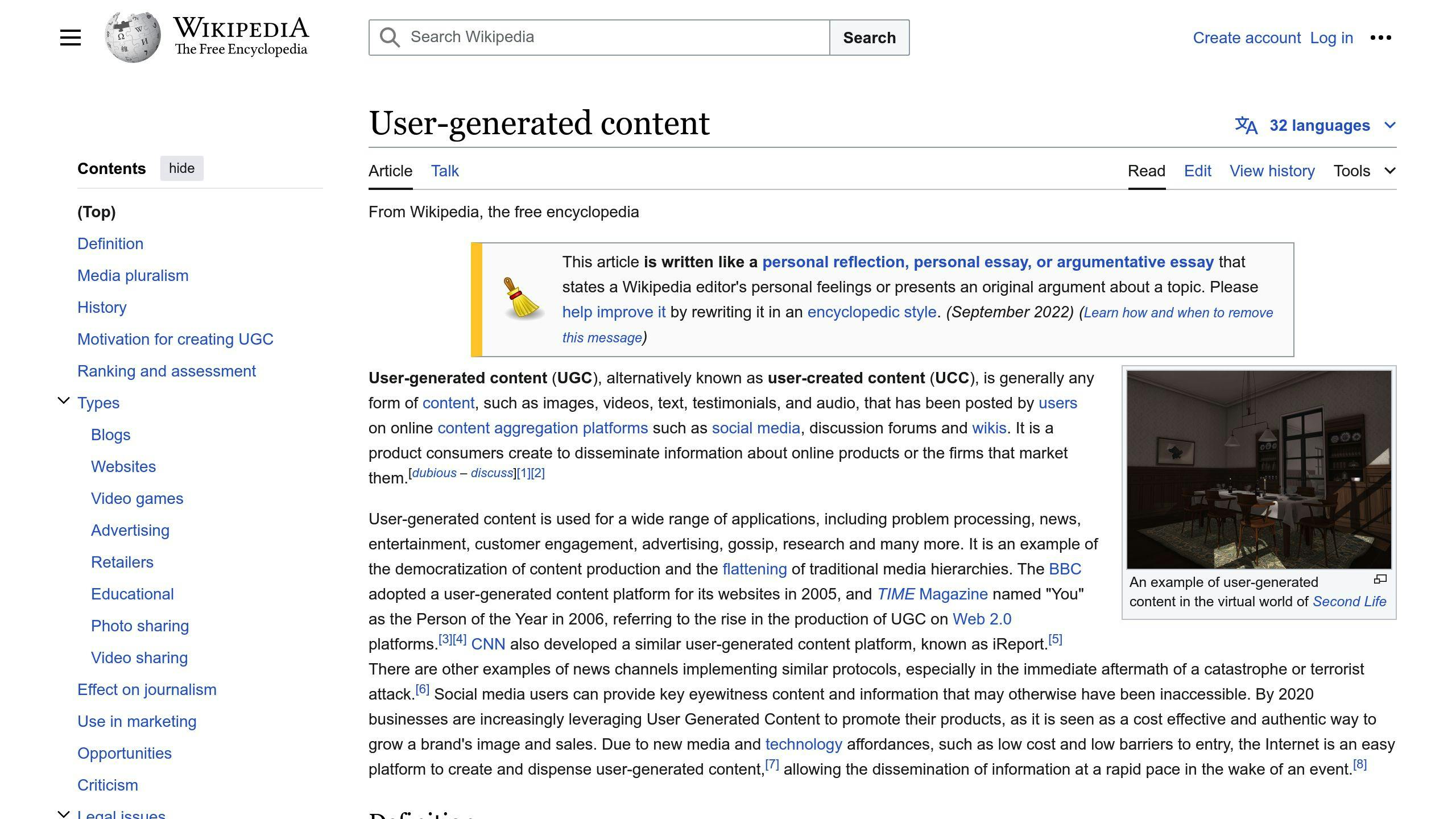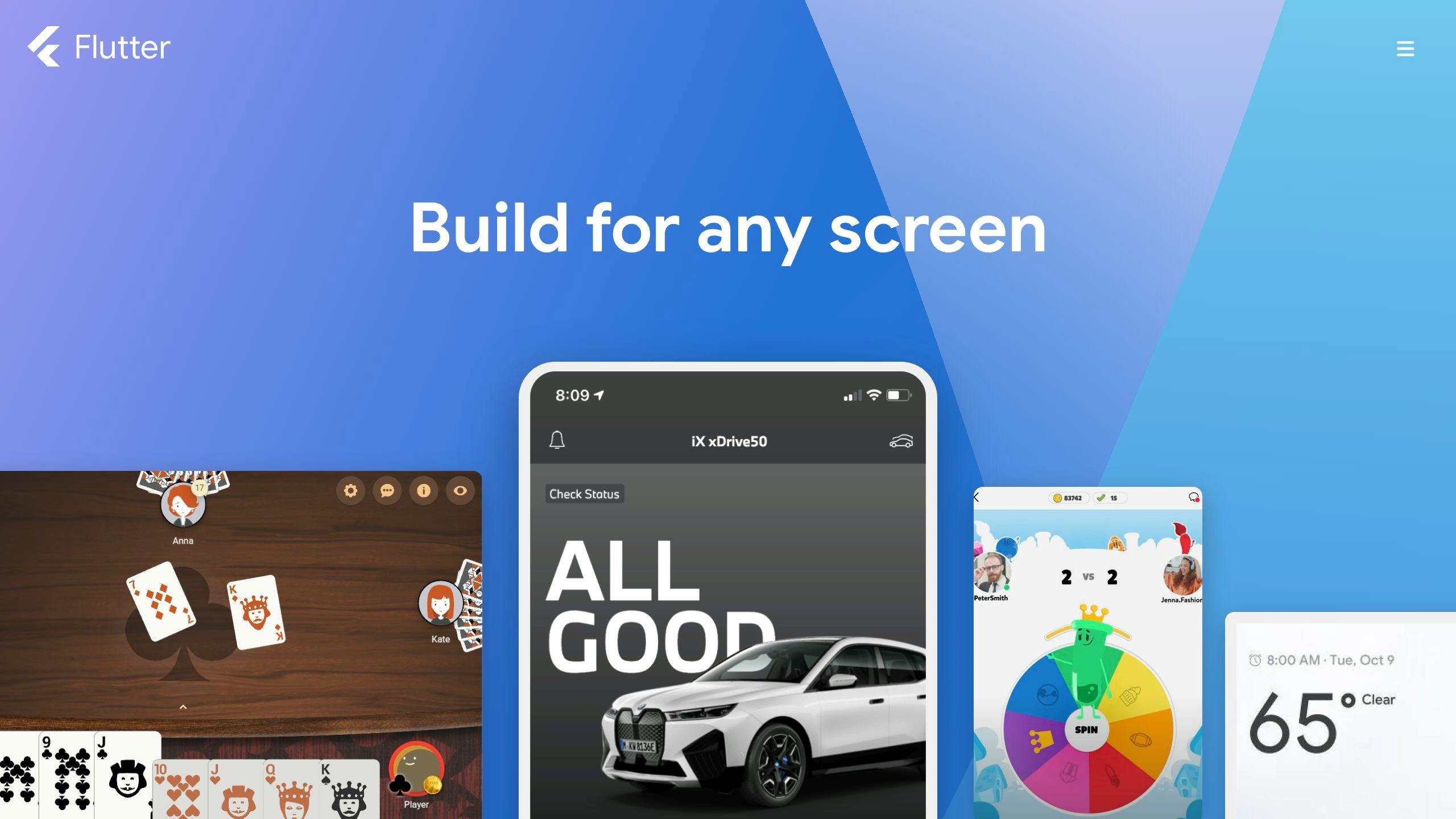Influencer marketing is a powerful tool for app developers to promote their products and reach their target audience. By partnering with influencers who have a loyal following, you can tap into their influence and credibility. Here are the 10 essential steps to build successful influencer collaborations:
- Define Your Goals and Objectives: Set clear, measurable goals such as increasing brand awareness, driving engagement, generating sales, or collecting leads. Use the SMART (Specific, Measurable, Achievable, Relevant, Time-bound) framework.
- Choose the Right Influencer: Evaluate influencers based on their niche, audience alignment, engagement rates, authenticity, and credibility. Analyze their performance metrics and past collaborations.
- Develop a Collaboration Strategy: Outline the collaboration objectives, type (sponsored content, product placement, ambassador program, etc.), communication channels, and performance metrics.
- Establish a Budget and Compensation Plan: Determine your budget based on goals, influencer reach, and campaign duration. Choose a compensation model (pay-per-post, affiliate/commission, product exchange, flat rate) and negotiate fair terms.
- Create a Clear Collaboration Proposal: Introduce the campaign vision, provide influencer information, outline strategies, and define success metrics.
- Negotiate and Finalize the Collaboration Terms: Establish clear communication, discuss compensation and payment terms, define deliverables and timelines, agree on usage rights and exclusivity, and document the agreement.
- Monitor and Measure Campaign Performance: Track key performance indicators (KPIs) such as reach, engagement, follower growth, click-through rates, and conversions using influencer marketing platforms and tools.
- Optimize and Refine the Collaboration: Analyze campaign performance data, identify areas for improvement, and refine your strategy based on influencer feedback.
- Leverage User-Generated Content and Social Proof: Encourage users to create content, feature user-generated content on social media, include customer testimonials in influencer content, and create a dedicated UGC page.
- Review and Evaluate the Collaboration's Success: Measure KPIs such as engagement metrics, reach and impressions, website traffic and conversions, and return on investment (ROI). Gather feedback from influencers and audiences to refine your influencer marketing strategy.
By following these steps, app developers can maximize the impact of their influencer collaborations, driving meaningful results and building stronger partnerships with influencers.
Related video from YouTube
1. Define Your Goals and Objectives
Defining your goals and objectives is the first step towards a successful influencer collaboration. This step is crucial as it sets the foundation for the entire campaign. Without clear goals, you risk wasting resources and failing to achieve the desired outcomes.
Why Set Goals?
Setting goals helps you:
- Clarify your objectives and expectations
- Focus your efforts on what matters most
- Measure the success of your campaign
- Identify the right influencers for your brand
- Develop a strategy that aligns with your goals
Types of Goals
Here are some common types of goals for influencer collaborations:
Goal TypeDescriptionBrand AwarenessIncrease brand recognition and reach a larger audienceEngagementDrive likes, comments, shares, and other forms of engagement on social mediaSalesGenerate sales and revenue through influencer promotionsLead GenerationCollect leads and build a list of potential customersUser-Generated ContentEncourage influencers to create content that showcases your brand
How to Set SMART Goals

When setting goals, make sure they are Specific, Measurable, Achievable, Relevant, and Time-bound (SMART). Here are some examples:
- "Increase brand awareness among millennials by 20% within the next 6 months"
- "Drive 1,000 sales through influencer promotions within the next quarter"
- "Collect 500 leads through influencer-generated content within the next 3 months"
By setting SMART goals, you can create a clear roadmap for your influencer collaboration and ensure that you're working towards specific, measurable outcomes.
2. Choose the Right Influencer
Selecting the right influencer is vital for a successful collaboration. The influencer you choose should align with your brand values, resonate with your target audience, and have a genuine connection with their followers.
Evaluate the Influencer's Niche and Audience
To ensure the influencer is a good fit, consider the following:
CriteriaDescriptionContent alignmentDoes the influencer's content align with your brand's niche and values?Target audienceDoes the influencer's audience match your target demographic in terms of interests, location, age, and other relevant factors?Niche expertiseIs the influencer a specialist in a specific niche, and does that niche align with your brand?Engagement ratesDoes the influencer have high engagement rates, indicating a genuine connection with their audience?
Assess the Influencer's Authenticity and Credibility
When evaluating an influencer's authenticity and credibility, consider:
CriteriaDescriptionAuthentic contentDoes the influencer create genuine and trustworthy content that resonates with their audience?Sponsored content balanceDoes the influencer strike a balance between sponsored and organic content?Industry expertiseDoes the influencer have expertise or experience in your industry or niche, lending credibility to your brand?
Analyze the Influencer's Performance Metrics
To evaluate an influencer's performance, review:
MetricDescriptionEngagement ratesAre the influencer's engagement rates high, indicating a strong connection with their audience?Audience demographicsDoes the influencer's audience demographics align with your target audience?Past collaborationsHave the influencer's past collaborations been successful, and do they align with your campaign goals?Fake followers and engagementDoes the influencer have a high percentage of fake followers or engagement, which could undermine your campaign's effectiveness?
By carefully evaluating influencers based on these criteria, you can increase the chances of a successful collaboration that resonates with your target audience and achieves your campaign goals.
3. Develop a Collaboration Strategy
Developing a collaboration strategy is crucial for a successful influencer partnership. This strategy outlines the goals, objectives, and expectations of the collaboration, ensuring both parties are on the same page.
Define Collaboration Objectives
Identify the key objectives of the collaboration, such as:
- Increasing brand awareness
- Driving website traffic
- Boosting sales
- Improving engagement
- Enhancing brand reputation
Determine Collaboration Type
Decide on the type of collaboration that best suits your brand's goals, such as:
Collaboration TypeDescriptionSponsored contentPartner with influencers to create sponsored contentProduct placementFeature your product in an influencer's contentEvent partnershipCollaborate with influencers to host an event or webinarAmbassador programPartner with influencers for an extended periodUser-generated content campaignEncourage influencers to create content featuring your brand
Establish Communication Channels
Define the communication channels and protocols for the collaboration, including:
- Regular check-ins
- Content review and approval process
- Crisis management plan
Set Performance Metrics
Establish the key performance indicators (KPIs) to measure the success of the collaboration, such as:
MetricDescriptionEngagement ratesMeasure likes, comments, shares, and other engagement metricsReach and impressionsTrack the number of people who viewed the contentConversions and salesMonitor the number of sales generated from the collaborationSentiment analysisAnalyze the overall sentiment of the audience towards the brand
By developing a comprehensive collaboration strategy, you can ensure a successful and effective partnership with the influencer, ultimately driving business results and achieving your marketing goals.
4. Establish a Budget and Compensation Plan
When collaborating with influencers, it's essential to have a clear budget and compensation plan in place. Here's what you need to consider:
Determine Your Budget
Start by deciding how much you're willing to spend on the influencer campaign. Think about:
- Your campaign goals and expected return on investment (ROI)
- The influencer's reach and engagement rates
- The number of influencers you plan to work with
- The campaign duration
Choose a Compensation Model
There are several ways to compensate influencers:
ModelDescriptionPay-per-postFixed fee for each sponsored postAffiliate/CommissionPercentage of sales driven by the influencerProduct/Service ExchangeOffer free products or services in exchange for promotionFlat RateFixed fee for the entire campaign
Choose a model that aligns with your goals, budget, and the influencer's preferences.
Evaluate Influencer Rates
Influencer rates vary based on factors such as:
- Follower count
- Engagement rate
- Content quality
- Niche relevance
- Brand alignment
Research industry standards to ensure fair compensation.
Negotiate and Finalize Terms
Once you've identified potential influencers, negotiate the compensation package and finalize the terms of the collaboration. Be transparent about your budget and expectations, and ensure both parties are satisfied with the agreement.
Manage Payments Efficiently
Consider using an influencer marketing platform or payment provider to streamline the payment process. This can help ensure timely and transparent payments, while also simplifying invoicing and tracking.
By establishing a clear budget and compensation plan, you can foster successful and mutually beneficial collaborations with influencers, ultimately driving your marketing goals and maximizing your return on investment.
5. Create a Clear Collaboration Proposal
A well-structured proposal is essential for a successful influencer partnership. It outlines the campaign's objectives, scope, and expectations, ensuring both parties are on the same page.
Introduce the Campaign Vision
Explain the overall vision for your campaign, including the goals, target audience, and desired outcomes. This sets the stage for the influencer to understand the context and purpose of the collaboration.
Influencer Information
Provide details about the selected influencers, including their niche, reach, engagement rates, and previous collaborations. This demonstrates your understanding of their audience and content style.
Campaign Strategies
Describe the specific strategies and tactics you propose to achieve the campaign's objectives. This may include sponsored content, product placements, giveaways, or exclusive offers.
Measuring Success
Clearly outline the key performance indicators (KPIs) you'll use to measure the campaign's success. This may include engagement rates, conversions, website traffic, or sales.
Here's an example of what the proposal structure could look like:
SectionDescriptionCampaign VisionOverall vision, goals, target audience, and desired outcomesInfluencer InformationNiche, reach, engagement rates, and previous collaborationsCampaign StrategiesSponsored content, product placements, giveaways, or exclusive offersMeasuring SuccessKey performance indicators (KPIs) to measure campaign success
By creating a clear and comprehensive collaboration proposal, you'll increase the likelihood of securing influencer partnerships that drive meaningful results for your brand.
sbb-itb-8abf120
6. Negotiate and Finalize the Collaboration Terms
Once you've presented your collaboration proposal, it's time to negotiate the terms and finalize the agreement. This step is crucial to ensure that both parties are aligned on expectations, deliverables, and compensation.
Establish Clear Communication
Maintain open and transparent communication throughout the negotiation process. Address any concerns or questions the influencer may have, and be willing to compromise on reasonable requests.
Discuss Compensation and Payment Terms
Influencer compensation can take various forms. Discuss the preferred compensation model and agree on payment terms, including the amount, payment schedule, and method.
Define Deliverables and Timelines
Clearly outline the specific deliverables expected from the influencer, such as the number of posts, content format, and any specific requirements or guidelines. Establish realistic timelines for content creation, review, and publishing.
Agree on Usage Rights and Exclusivity
Determine who will own the rights to the content created during the collaboration and the terms for its usage. Discuss any exclusivity requirements, such as the influencer not promoting competing products or services during the campaign.
Document the Agreement
Once all terms have been agreed upon, formalize the collaboration by drafting a written agreement or contract. This document should clearly outline the responsibilities of both parties, compensation, deliverables, timelines, and any other relevant terms.
Here's a sample outline of what the agreement should cover:
TermDescriptionCompensationAmount, payment schedule, and methodDeliverablesNumber of posts, content format, and specific requirementsTimelinesContent creation, review, and publishing schedulesUsage RightsOwnership and terms for content usageExclusivityAny restrictions on promoting competing products or servicesResponsibilitiesRoles and obligations of both parties
By negotiating and finalizing the collaboration terms transparently and professionally, you establish a solid foundation for a successful influencer partnership that delivers value for both your brand and the influencer.
7. Monitor and Measure Campaign Performance
To ensure the success of your influencer collaboration, it's essential to regularly track and measure campaign performance. This step helps you identify areas for improvement and make data-driven decisions to optimize your campaign.
Track Key Performance Indicators (KPIs)
Establish a set of KPIs that align with your campaign goals and objectives. Common KPIs for influencer marketing campaigns include:
KPIDescriptionReach and impressionsThe total number of individuals exposed to the influencer's contentEngagement ratesThe level of interaction generated by the content, such as likes, comments, and sharesFollower growthThe increase in followers or subscribers resulting from the campaignClick-through rates (CTR)The percentage of users who click on links shared by the influencerConversions and salesThe number of conversions or sales generated from the campaign
Utilize Influencer Marketing Platforms and Tools

Leverage influencer marketing platforms and tools to streamline campaign tracking and measurement. These platforms often provide features such as:
- Campaign analytics and reporting
- Influencer performance tracking
- Content scheduling and publishing
- Collaboration and communication tools
Regularly Review and Refine Your Strategy
Schedule regular check-ins to review campaign performance and refine your strategy as needed. Analyze the data, identify areas for improvement, and make adjustments to optimize your campaign's success.
By monitoring and measuring campaign performance, you can ensure that your influencer collaboration is effective, efficient, and aligned with your brand's goals and objectives.
8. Optimize and Refine the Collaboration
Optimizing and refining your influencer collaboration is crucial to achieving the desired results. This step involves tracking campaign performance, identifying areas for improvement, and making data-driven decisions to refine your strategy.
Track Campaign Performance
Regularly monitor your campaign's performance using metrics such as engagement rates, reach, and conversions. This will help you identify what's working and what needs improvement.
Analyze and Refine Your Strategy
Use the data collected to analyze your campaign's performance and refine your strategy. Identify areas that require adjustments, such as content type, posting schedule, or influencer selection. Make data-driven decisions to optimize your campaign and improve its overall performance.
Leverage Influencer Feedback
Collaborate with your influencers to gather feedback on the campaign's performance. They may have valuable insights into their audience's preferences and behaviors, which can help refine your strategy.
Optimization Checklist
AreaActionContentReview and adjust content type, format, and tonePosting ScheduleAdjust posting frequency and timing to optimize engagementInfluencer SelectionRe-evaluate influencer selection based on performance and audience alignmentCampaign GoalsRefine campaign goals and objectives based on performance data
By continuously optimizing and refining your influencer collaboration, you can ensure that your campaign remains effective, efficient, and aligned with your brand's goals and objectives.
9. Leverage User-Generated Content and Social Proof

User-generated content (UGC) and social proof are essential for a successful influencer collaboration. UGC refers to content created by users, such as reviews, testimonials, photos, or videos, that showcases their experiences with a brand's products or services. Social proof is the psychological phenomenon where people adopt the actions of others because they believe it is the correct behavior.
The Benefits of UGC and Social Proof
BenefitDescriptionIncreased credibilityUGC and social proof increase the credibility of an influencer's contentImproved engagementUGC and social proof improve engagement rates, as users interact with relatable contentBoosted conversionsUGC and social proof boost conversions, as users make purchases based on others' recommendations
How to Leverage UGC and Social Proof
Here are some ways to leverage UGC and social proof in your influencer collaboration:
1. Encourage users to create content: Offer incentives, such as discounts or free products, in exchange for UGC.
2. Feature UGC on social media: Share UGC on social media platforms to increase engagement and credibility.
3. Use social proof in influencer content: Include customer testimonials or reviews in influencer content to increase credibility and trust.
4. Create a dedicated UGC page: Showcase user-generated content and social proof on a dedicated page on your website or social media platform.
By leveraging UGC and social proof, you can increase the success of your influencer collaboration and drive more engagement, conversions, and sales.
10. Review and Evaluate the Collaboration's Success
After the influencer campaign has ended, it's essential to review and evaluate its success. This step helps you assess the effectiveness of your collaboration and identify areas for improvement in future campaigns.
Measure Key Performance Indicators (KPIs)
To evaluate the success of your influencer collaboration, you need to measure the relevant KPIs. These may include:
Engagement Metrics
MetricDescriptionLikes, comments, shares, and savesTotal engagements on the influencer's postsEngagement rateTotal engagements / total reachSentiment analysisAnalysis of comments and mentions
Reach and Impressions
MetricDescriptionTotal unique usersNumber of users exposed to the campaignImpressionsTotal views of the influencer's content
Website Traffic and Conversions
MetricDescriptionReferral trafficTraffic from the influencer's contentClick-through rates (CTRs)CTRs on trackable linksConversion ratesSales, sign-ups, downloads, etc.
Return on Investment (ROI)
MetricDescriptionRevenue generatedRevenue from the campaignROI calculation(Revenue - Campaign Cost) / Campaign Cost
By analyzing these metrics, you can determine whether the influencer collaboration met your goals and objectives.
Gather Feedback and Insights
In addition to quantitative data, gather qualitative feedback and insights from both the influencer and your target audience. This can help you understand the campaign's strengths, weaknesses, and areas for improvement.
- Influencer Feedback: Ask the influencer for their perspective on the collaboration, including what worked well and what could be improved.
- Audience Feedback: Conduct surveys or analyze social media comments to gauge audience sentiment and gather insights into their perception of the campaign.
Refine Your Influencer Marketing Strategy
Based on your analysis of the KPIs, feedback, and insights, refine your influencer marketing strategy for future collaborations. Consider factors such as:
- Influencer selection criteria
- Content creation and messaging
- Campaign timing and duration
- Promotional tactics and channels
By continuously reviewing and evaluating your influencer collaborations, you can optimize your strategies, maximize your ROI, and build stronger, more effective partnerships with influencers.
Conclusion
In conclusion, successful influencer collaborations require careful planning, clear communication, and ongoing optimization. By following these 10 steps, app developers can enhance their marketing efforts and drive meaningful results through influencer partnerships.
Key Takeaways
StepDescription1. Define Goals and ObjectivesSet clear goals and objectives for the collaboration2. Choose the Right InfluencerSelect an influencer who aligns with your brand values and target audience3. Develop a Collaboration StrategyOutline the goals, objectives, and expectations of the collaboration4. Establish a Budget and Compensation PlanDetermine the budget and compensation model for the influencer5. Create a Clear Collaboration ProposalOutline the campaign's objectives, scope, and expectations6. Negotiate and Finalize the Collaboration TermsAgree on the terms and conditions of the collaboration7. Monitor and Measure Campaign PerformanceTrack and measure the campaign's performance using KPIs8. Optimize and Refine the CollaborationRefine the strategy based on campaign performance data9. Leverage User-Generated Content and Social ProofEncourage users to create content and showcase social proof10. Review and Evaluate the Collaboration's SuccessAssess the campaign's success and identify areas for improvement
By following these steps, app developers can maximize their ROI and build stronger, more effective partnerships with influencers.











